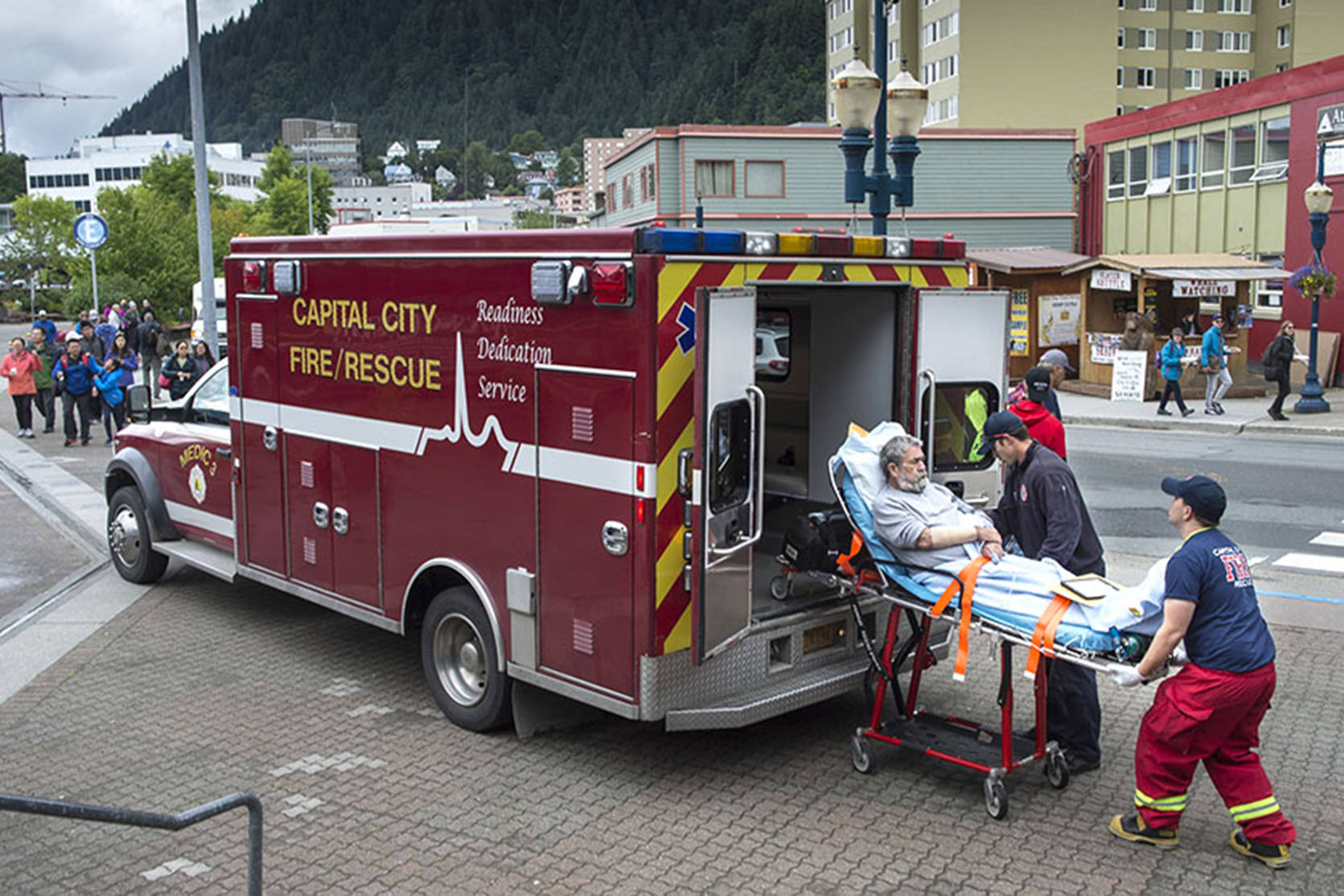This is a three-part series on how first responders, Coast Guardsmen and the medical community in Juneau treat tourists aboard cruise ships who become sick or injured while visiting. See the final part in the series in Friday’s newspaper.
For underway medical evacuation of tourists from cruise ships, the Coast Guard often takes the lead, with their experience and vehicles specifically tailored for the mission. But the medical care often falls to the paramedics of Capital City Fire/Rescue.
“If it’s inside the bounds of the CBJ, it’s automatic. We’ll go,” CCFR Assistant Fire Chief Ed Quinto said.
The cruise ships are usually outside those bounds, but in cooperation with the Coast Guard, just like with other agencies, CCFR acts in support if it’s needed.
CCFR makes the call to support a Coast Guard medevac on a case-by-case basis, based on the resources available, the condition of the patient, and a number of other factors determining whether it’s prudent to release one of their trained firefighter/paramedics for a detached duty. Rescues aren’t common, Quinto said, but they do happen, with three rescue calls last year.
Coast Guard medevacs man from cruise ship near Douglas
“We have a lot of collaborative efforts with other agencies to provide the best service we can,” firefighter/paramedic Daniel Babcock said.
The Coast Guard typically executes a medevac from an underway cruise ship when the cruise ship’s onboard medical facilities are not able to perform the level of specialist care the patient requires, Babcock said. In this case, the Coast Guard gets a call. If the situation is sufficiently dire, they may ask for support from the CCFR to help give in-transit care to the patient.
CCFR is also responsible for transport from the pier to the terminal destination for medical care, usually Bartlett Regional Hospital, Babcock said.
CCFR evaluates the needs of the patient and the ability of the CCFR to spare assistance for the mission, out of their jurisdiction as it is, Quinto said. The Coast Guard is usually pretty good at handling at-sea evacuations without support, Quinto said. CCFR has only had to ride along on one evacuation this year.
“We may or may not be able to go,” Quinto said. “We usually send our paramedic off the ambulance on the boat, and then we’ll backfill that position,” Quinto said.
Backfilling the position means that Juneau is always fully covered for emergency medical services, and that the taxpayers of the city are getting the services they pay for.
“The fire department will always keep the citizens of Juneau safe,” Quinto said. “We’ll always have a full roster.”
‘There was too much smoke’: Neighbors who tried to save house fire victim tell story
When a paramedic is deployed with the Coast Guard, however, they’ll always give their best care, however difficult it may be to deliver that onboard the small, fast moving boat.
“We improvise and we do what we can with what we have,” said Babcock. “Sometimes it means we’re bouncing around in rough seas trying to keep a patient immobilized for traumatic injury.”
In addition to working under rough conditions, depending on the sea state, the paramedics are also limited by being out of their ambulances, a threat every time they have to carry out a rescue via helicopter, boat or other form of transport.
“Hopefully, you’ve brought everything you need, because you never know what’s going to happen,” Quinto said.
• Contact reporter Michael S. Lockett at 523-2271 or mlockett@juneauempire.com.

